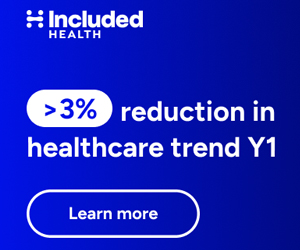By BILL REID
Earlier, I offered a sarcastic headline view of the coming year. Yet, underlying these headlines are some more serious issues that we as an industry have to address. They may not happen this year, but we need to continue to make progress. Wouldn’t it be awesome if for once we under predicted what will happen?
Healthcare Organization Wakes Up In Strange Place, Reports Massive Headache
Reality: Many organizations are not quite sure what hit them – they have purchased and implemented a number of systems, sometime more than once, in the last several years and now are waking up to the reality that that might not be enough or even the right set of technologies for the emerging payment models. Return on investment is hard to show, debt used to finance purchases along with stimulus funds are coming due. System after system has had to report negative results on financial reports due to higher than expected costs, longer than anticipated implementations. It’s enough to give any CIO a headache.
Healthcare Interoperability Finally A Reality
Reality: Interoperability remains elusive despite ongoing talk and the creation of various coalitions. Sometimes it seems that few want to actually solve the problem. Healthcare organizations are afraid to lose patients to competitors. Vendors are fighting for the last remaining market share, and aggressively seeking to displace others, and using local market coverage as a selling point. Sure there are lots of sites now propped up showing FHIR APIs – but in reality these are mostly read-only and not particularly functional.
Foolproof Security Strategy Unveiled: Don’t Click on $h!t
Reality: We expect to continue to see rise in reported security incidents. Attackers are not script-kiddies, but sophisticated hacking businesses making hundreds of millions a year in paid ransoms. Our industry has a large surface area – with lots of organizations and millions of employees on millions of computing devices. Our treatment facilities are filled with millions of connected devices monitoring at the bedside. Like in any public health crisis, we need to not just wait around for the all-powerful anti-biotic. We need to do basic hygiene well – patching, training, monitoring and rapidly responding to small outbreaks before they become bigger. We are an industry that has experience in facing one set of viruses – we need to turn that thinking on securing our systems and keeping them healthy.
Affordable Care Act Files for Divorce, Claims Infidelity
Reality: It is uncertain what the final fate of the Affordable Care Act will be. Chances are that some changes will be made – too much public bluster was made about repeal for there to be any backing down, but the potential real harm that may come to the electorate that loses coverage or sees prices resume their rapid rise, will prove to be a check on full-scale repeal.
Family Physician Found Dead in Pool of Alphabet Soup
Reality: It is challenging to remain in a small practice today. There is an ever changing set of requirements and initiative from payers and from government entities and it can all sound like a pool of random letters. For example, MACRA is now in effect and yet surveys show that many providers have no idea what it means or what is involved. Radiology providers will soon have to ensure that ordering doctors begin using clinical decision support management (CDSM) tools to subject orders to appropriate use criteria (AUC) that were developed by Provider Led Entities (PLEs). This is on top of HIPAA, HITECH, OPPS, and many others.
Consumer-Driven Healthcare Recalled, Engagement Engine Too Weak
Reality: For all the talk about consumer driven healthcare, there seems to be little change in the position patients find themselves. There remains little pricing information, payment terms and coverages are difficult to understand for the average reader, and Health Savings Accounts aren’t much other than a new form of deductible for insurance companies. Most consumer online tools provide little utility, other than provider-out reporting. Patients continue to have difficulty getting access to medical records in any useable form. Mobile applications seldom exist, and when they do few if any are on par with the experiences of other tools like Uber, Amazon, Snapchat or Facebook. It’s bad enough if you are reasonably healthy; it’s worse if you are trying to manage a chronic illness. You can completely organize a complex trip on a phone, but just try to pay a healthcare claim, set up a number of visits to a variety of providers, or understand what you need to do next to care for yourself.
Continue reading…














